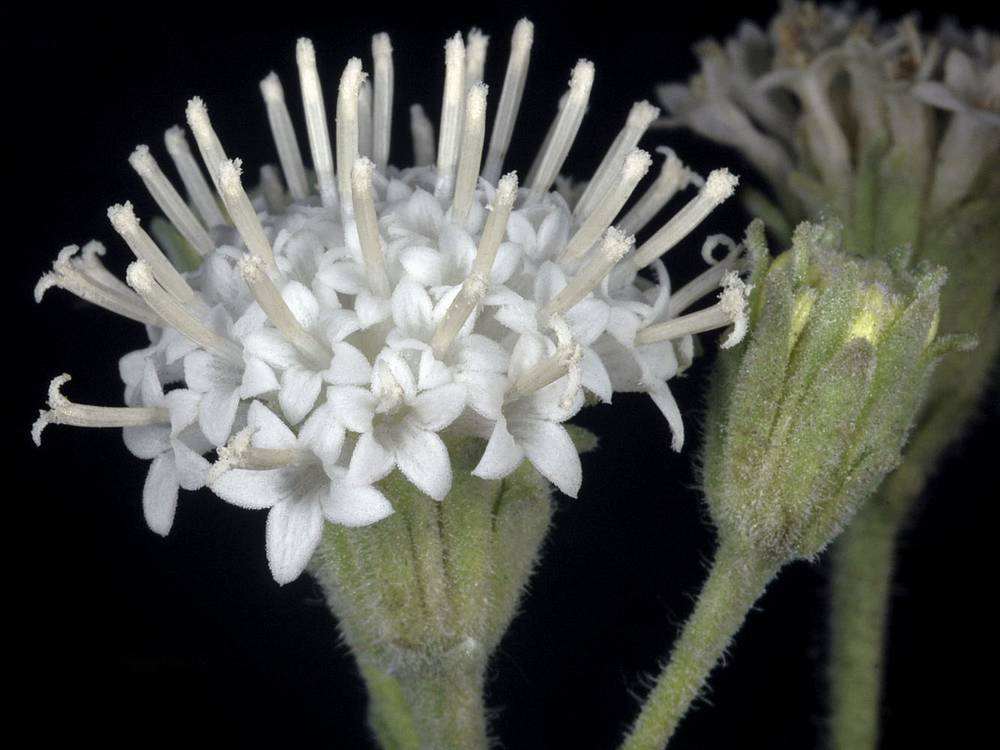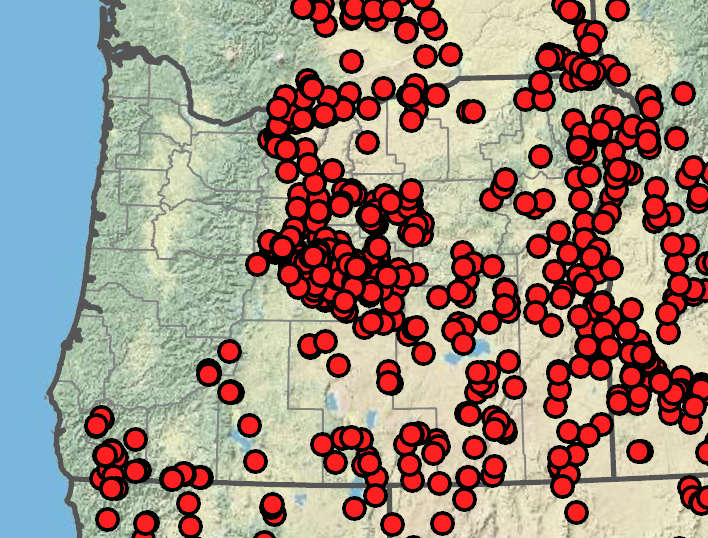Chaenactis douglasii
Chaenactis macrantha
Douglas' dusty maidens, hoary false yarrow
bighead dusty maidens, large-flowered chaenactis, Mojave pincushion
erect, floccose-tomentose, often glandular-puberulent distally.
erect or decumbent, lightly to densely floccose-tomentose.
basal and cauline, narrowly lanceolate to oblanceolate, elliptic, or linear, 1–12 cm, 2-pinnately lobed; secondary lobes becoming inrolled and disc-like with age;
surfaces tomentose, petiolate.
basal and cauline, lanceolate or ovate, 1–5 cm, 1–2-pinnately lobed;
surfaces glabrous or tomentose, petiolate.
obconic or campanulate, 8–15 mm.
obconic or campanulate, 10–17 mm.
corollas 5–8 mm, white, pink, or pale yellow, glabrous or glandular-puberulent; outer radially symmetric.
corollas night-blooming, 9–14 mm, cream or pink;
surfaces glandular-puberulent; outer radially symmetric.
in 2–5 unequal series, linear to narrowly elliptic or oblanceolate;
surfaces cobwebby to woolly, stipitate-glandular.
in 3–4 unequal series, linear to narrowly elliptic or oblanceolate;
surfaces lightly or densely tomentose.
5–8 mm;
surfaces strigose or glandular-puberulent;
pappi in 3–4 series of unequal scales.
5–7 mm;
surfaces strigose;
pappi in 2 series of unequal scales.
erect, peduncled.
usually erect, sometimes drooping in bud, peduncled.
=12, 24, 36.
=12.
Chaenactis douglasii
Chaenactis macrantha
Woodlands, shrublands, grasslands, dry hillsides, ridge tops, riverbanks, rock outcrops, disturbed areas. Flowering Apr–Sep. 0–2300 m. BR, BW, Casc, Col, ECas, Lava, Owy, Sisk. CA, ID, NV, WA; north to British Columbia, northeast to Alberta, east to SD, southeast to NM. Native.
Chromosome studies by Mooring (1980) show that this species varies from diploid to hexaploid, with intermediate numbers resulting from hybridization. As a result, morphological differences at the diploid level become mixed into a morphological continuum among the polyploids.
Shrublands, grasslands, open slopes and flats. Flowering May–Jun. 700–1400 m. BR, Owy. CA, ID, NV, WA; southeast to AZ. Native.
Kenton Chambers
Kenton Chambers
- Local floras:
BC,
CA,
OR,
WA
- Local Web sites:
CalFlora,
CalPhotos,
Flora NW,
PNW Herbaria,
Turner Photog.
WildflowerSearch
iNaturalist (observations)
USDA Plants Database
- LBJ Wildflower Center
- SEINet
- Plants of the World Online
- Encyclopedia of Life
- Wikipedia
- Google Image Search





